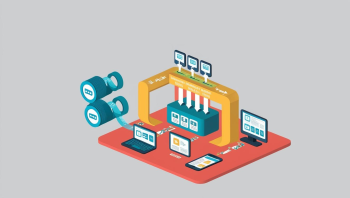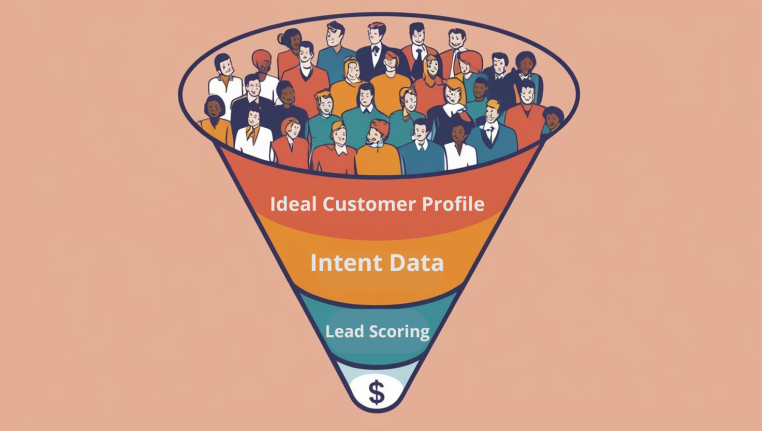How Marketing Analytics Can Enhance Campaign Personalization: Tips, Tools & Strategies

Table of Contents
In today’s fast-paced digital world, personalization has shifted from being a nice-to-have to a must-have. Customers are inundated with ads, emails, and promotions, and they've become experts at tuning out generic messages. What really grabs their attention, fosters loyalty, and boosts conversions is content that feels specifically designed for their unique needs and preferences. This is where marketing analytics comes into play, acting as a bridge between raw data and genuine engagement.
By diving into customer behavior, interactions, and feedback, marketing analytics gives brands the tools they need to create campaigns that truly resonate on a personal level. From segmenting audiences to predicting future behaviors, the power of analytics is revolutionizing how marketers connect with consumers. But remember, personalization goes beyond just using someone's first name in an email; it’s about crafting experiences that feel relevant at every single touchpoint.
Why Personalization Matters in Modern Marketing
Personalization is key because today’s consumers really expect it. Numerous studies have shown that people are much more likely to engage with brands that see them as individuals. When brands run personalized campaigns, they tend to see higher open rates, click-through rates, and conversions, while generic campaigns often get lost in the shuffle.
Think of personalization as a conversation instead of a one-way broadcast. Rather than blasting the same message to everyone, marketers leverage analytics to listen, understand, and respond to each customer’s unique journey. Whether it’s through product recommendations, customized promotions, or targeted ads, personalization helps build stronger relationships between brands and consumers, ultimately leading to greater lifetime value.
But without analytics, personalization can feel like a shot in the dark. To truly personalize effectively, you need insights from data understanding what customers want, when they want it, and how they like to engage. Marketing analytics lays the groundwork for turning that information into a solid strategy.
The Role of Marketing Analytics in Campaign Personalization
At its core, marketing analytics revolves around collecting, measuring, and interpreting data. In personalization, it plays three essential roles:
- Segmentation: Analytics allows marketers to group audiences by demographics, behavior, or interests. Instead of treating the entire customer base as a monolith, campaigns can be adjusted for each segment.
- Prediction: Advanced analytics uses algorithms to anticipate future behaviors. This could mean predicting which products a customer is likely to purchase next or identifying churn risks before they happen.
- Optimization: Campaign performance can be measured in real time, with data guiding adjustments. This ensures that personalization evolves with the audience rather than relying on static assumptions.
Together, these functions create a cycle of continuous improvement: campaigns become more accurate, relevant, and effective as analytics feeds back into the personalization strategy.
Tools Driving Personalization Through Analytics
The right tools can really boost the effectiveness of marketing analytics. Customer relationship management (CRM) platforms, data visualization tools, predictive modeling software, and marketing automation systems all contribute to creating personalized experiences for customers. CRM systems help centralize customer interactions, making it much easier to keep track of preferences and customize outreach efforts. Predictive analytics platforms leverage machine learning to anticipate trends, while automation tools send out timely, personalized messages across various channels. Data visualization tools take complex datasets and turn them into clear insights that inform strategy. By bringing these tools together, businesses can develop a more comprehensive understanding of their customers. This unified approach ensures that customers enjoy a consistent and seamless personalized experience, no matter which platform or channel they engage with.
Campaign Personalization Across Channels
Analytics-driven personalization is something that can really enhance every marketing channel. Take email marketing, for instance things like subject lines, content, and even the timing of your sends can be fine-tuned using user data. Social media platforms are all about analytics too, serving up dynamic ads that mirror what users have been browsing or interested in lately. And it doesn’t stop there; websites use personalization engines to suggest products or content based on what users have interacted with before.
Even traditional channels get in on the action. Retailers can tap into customer purchase histories to craft personalized promotions in-store. Call centers can utilize analytics to offer customized customer service. The real magic happens when there’s consistency making sure that personalization is seamless across every customer interaction, so it feels like a cohesive experience rather than a bunch of disconnected touchpoints.
The Balance Between Privacy and Personalization
Customers are really looking for personalized experiences, but they’re also becoming more aware of their privacy. With regulations like GDPR and CCPA changing the game, marketers have to rethink how they gather and use data. Striking the right balance between respecting customer privacy and providing tailored experiences is one of the biggest hurdles for today’s marketers.
Analytics can help tackle this issue by promoting transparency and giving customers control. It’s crucial for marketers to be upfront about how they collect and use data, and to offer something valuable in return for that information. By concentrating on first-party data information that customers willingly share brands can build trust while still delivering relevant campaigns.
The key is to use analytics wisely: only gather what you truly need, keep it safe, and apply it in ways that genuinely enhance the customer experience.
The Power of Predictive Analytics
Predictive analytics is one of the most powerful applications of marketing analytics in personalization. By analyzing historical data, predictive models forecast future customer behavior. This allows marketers to anticipate needs before they are explicitly expressed.
For instance, a subscription service might predict when a customer is likely to cancel and proactively offer tailored incentives. An e-commerce platform might predict which products a customer is most likely to buy and feature them prominently. Predictive analytics shifts marketing from reactive to proactive, giving businesses a competitive edge.
This predictive power is only as strong as the data behind it. Clean, comprehensive, and relevant datasets are crucial for accuracy. This is where the connection between market data and personalization becomes invaluable. Reliable data fuels the predictive models that enable brands to craft campaigns with precision. By grounding personalization strategies in robust data, marketers can reduce guesswork and enhance customer satisfaction.
Strategies for Implementing Analytics-Driven Personalization
Implementing analytics-driven personalization is about more than just having the right technology; it’s about fostering a cultural shift within the organization. Marketers need to embrace data-driven decision-making, work collaboratively across different departments, and stay flexible in adjusting their strategies.
The journey typically starts with pinpointing key performance indicators (KPIs) that align with personalization objectives, like engagement rates or customer retention. After that, marketers gather and integrate data from various sources to create a comprehensive view of the customer.
Testing and experimentation play a crucial role too. By conducting A/B tests on personalized campaigns, marketers can discover what truly resonates with their audiences. Over time, analytics help fine-tune personalization strategies, making them more effective with each iteration.
Overcoming Common Challenges
While analytics-driven personalization holds great promise, it certainly comes with its fair share of hurdles. One of the biggest challenges is the existence of data silos, where information is scattered across different departments or platforms. Without proper integration, efforts to personalize can end up being inconsistent.
Another issue is the risk of over-personalization. Customers generally appreciate relevant content, but if marketing feels too intrusive or overly predictive, it can make them uncomfortable. Finding that sweet spot is essential.
Lastly, limitations in resources both technical and human can hinder progress. To effectively implement advanced analytics, organizations need to invest in the right tools and training. It’s crucial for them to have the necessary infrastructure and expertise to make it all work.
Looking Ahead: The Future of Personalized Campaigns
As technology continues to advance, the art of personalization is set to get even more refined. Thanks to artificial intelligence, predictive analytics will dig deeper into complex datasets, revealing insights we never thought possible. Imagine brands being able to tweak their campaigns on the fly, responding to customer behavior in real-time!
Emerging technologies like augmented reality (AR) and virtual reality (VR) are paving the way for truly unique personalized experiences. Plus, when you throw in voice and IoT devices, the ways customers can connect with brands just keep multiplying.
The key to all these innovations? Analytics. Without those data-driven insights, personalization can end up feeling pretty shallow. But with the right analytics in place, it transforms into something powerful, scalable, and sustainable.
Final Thoughts
Marketing analytics is like the engine that drives meaningful personalization. It takes raw data and turns it into actionable insights, enabling marketers to create campaigns that truly connect with individuals instead of just targeting broad audiences. With tools ranging from predictive modeling to real-time optimization, analytics equips marketers with the strategies they need to meet the ever-growing expectations of consumers. For organizations ready to invest in the right tools, strategies, and skills, the benefits are clear: stronger relationships, increased engagement, and lasting customer loyalty. In a world where personalization can make the difference between being noticed and being overlooked, marketing analytics provides the essential roadmap to staying relevant and achieving success.
Share this article



